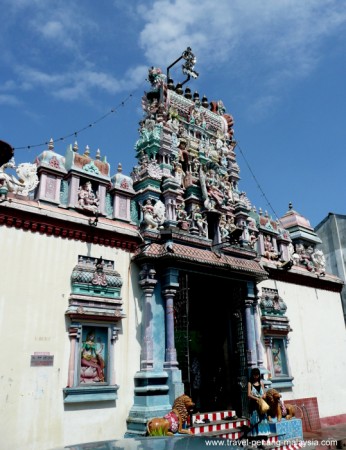

Sri Mariamman Temple holds an annual fire walking ceremony (timiti) about a week before Deepavali, the Festival of Lights, and it is an impressive sight. If you are in Singapore between mid-October and mid-November, you are welcome to one of the temple’s main festivals.

Ⓘ Interesting fact: Two nearby streets got their names because of this temple: Temple Street (for obvious reasons) and Pagoda Street, because of the shape of the temple’s gopura.

Anmd yet, the oldest parts of the temple are from the original 1843 structure. It is now a 3-story complex, complete with an auditorium and rooms for weddings, meetings, cultural events, and so forth. However, since then, the temple has been rebuilt and expanded to better serve the Hindu community. Sri Mariamman Temple remains the oldest Hindu temple in Singapore. The temple soon became a refuge for new immigrants, who stayed there till they found work and accommodation. In 1843, South Indian immigrants replaced it with something more substantial. Mariamman is also known for her healing powers in epidemic diseases such as cholera and smallpox, which were rampant in early Singapore’s jungle environment. It was dedicated to the goddess Mariamman, who nourishes and protects all things. The Hindus turned down the offer because Telok Ayer did not have the convenient source of fresh water that Hindus require for their rituals.Īfter the Brits offered this site at South Bridge Road (1823), a treasury clerk, who was the first recorded Indian immigrant to Singapore, built a humble wood and atap hut on the spot. It wasn’t supposed to be there originally the British first offered land in Telok Ayer Street for a Hindu Temple along with sites for a Chinese temple and a mosque. Sri Mariamman Temple dates back to 1827, which was eight years after the British East India Company established a trading settlement in Singapore.


 0 kommentar(er)
0 kommentar(er)
